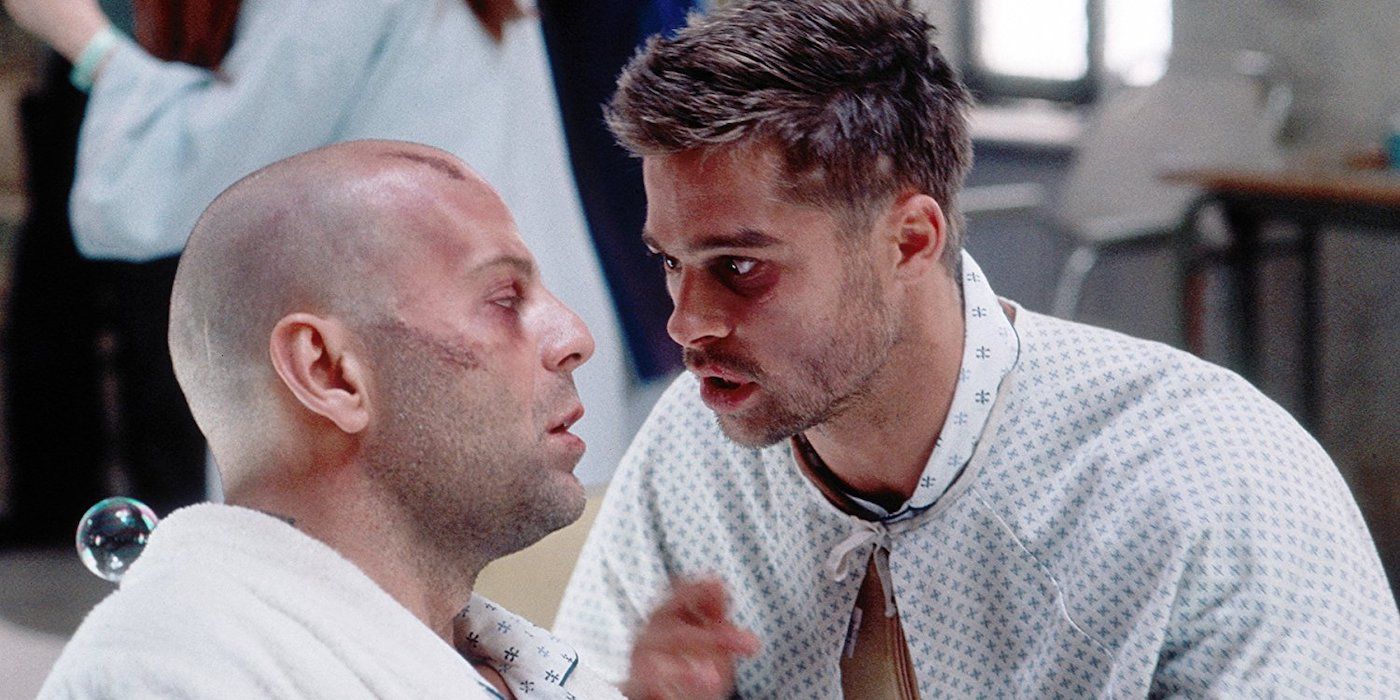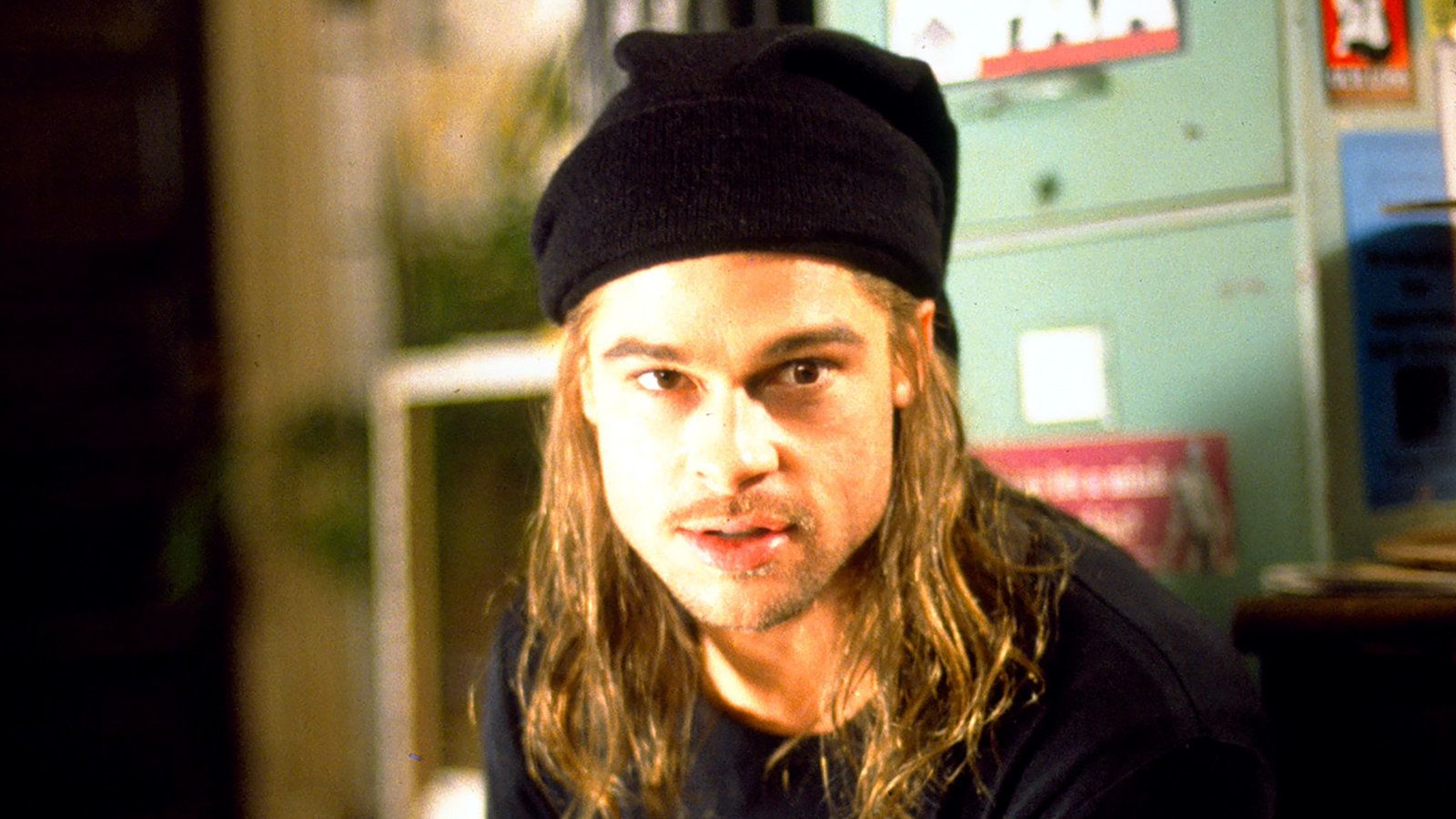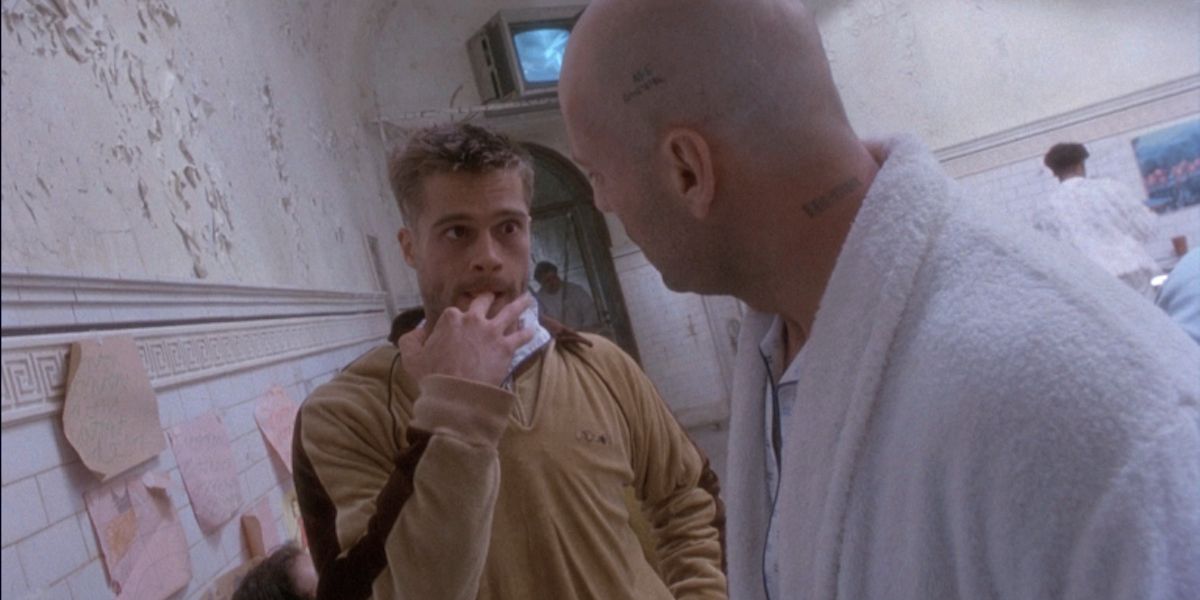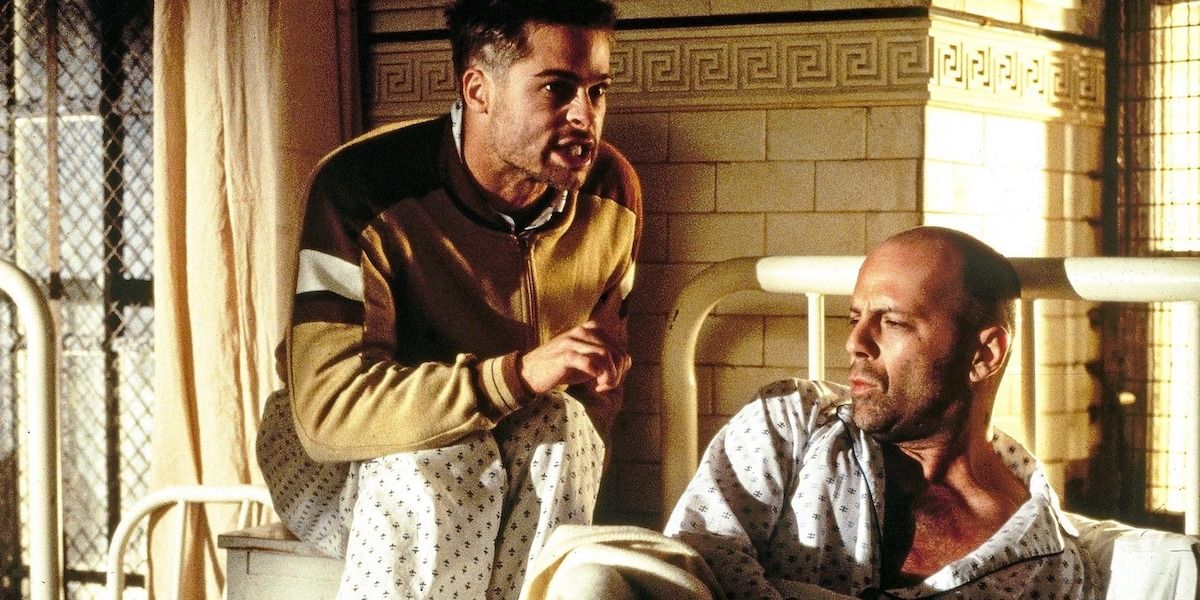Terry Gilliam's 12 Monkeys remains one of the director's most compelling films, packed to the gills with bizarre scenery, narrative switchbacks, and fascinating performances. One of the more perplexing elements of the film is its ending, which provides a fair share of ambiguity even to viewers paying careful attention. For those confounded by the sudden delivery of the gun or the role of the scientist on the plane, let this article serve as an explanation of the time travel in 12 Monkeys and its role in this film's gripping conclusion.
What Is 12 Monkeys About?
One of the reasons that 12 Monkeys is interesting to revisit with a modern lens is its post-apocalyptic future. The film begins with James Cole (Bruce Willis) imprisoned in a bleak looking cell within an underground prison in the year 2035. James is forced into "volunteer duty," which requires him to brave the planet's surface. After the outbreak of a virus in 1996, living above ground is no longer safe for humankind, though it is apparently quite hospitable for fearsome creatures like bears and lions, both of which James encounters on his visit to the surface. Because of his reliability, James is chosen by a bizarre group of scientists for a special mission: he will travel back in time to the year 1996 and locate a group known as The Army of the 12 Monkeys, who are believed to be responsible for releasing the virus. The scientists' overall goal is to pinpoint the location of the virus in its purest form so that they can study a sample and thereby devise a cure for the people of 2035.
Unfortunately for Cole the time travel device that the scientists use is a bit imprecise, resulting in him occasionally being sent to the wrong year. At one point he even finds himself in the middle of a World War I battlefield, thereby ensuring his place in history books as an example of what psychiatrist Dr. Kathryn Railly (Madeleine Stowe) dubs "Cassandra syndrome," a reference to the Trojan priestess of Greek myth whose doomsaying was never taken seriously. Cole also has the habit of suddenly disappearing whenever the scientists of the future decide that he needs to return, bewildering the people of the past in the process. Cole is drugged and flung across time and space, often reducing him to a drooling, erratic mess. It should be unsurprising that, like Cole, many viewers of 12 Monkeys have struggled to keep track of what exactly happened, which events (if any) were pre-destined, and how many of these misadventures were figments of Cole's imagination.
Understanding How 12 Monkeys Ends Is All About Remembering How it Begins
In order to understand the ending of 12 Monkeys, it is important to keep Cole's dream from the beginning of the movie in mind. While asleep in his prison cell in 2035, Cole dreams of a scene at an airport in the 1990s. The dream begins with the sound of a gunshot. A young boy watches a bloodied long-haired man fall to the ground. A woman shouts, "No!" and charges toward the long-haired man, cradling him. The film cuts from a shot of the boy watching the shooting to Bruce Willis's adult Cole asleep in his cell, implying that Cole was the child in the dream and that the dream is based on his memories. Thanks to the time travel complexity in 12 Monkeys, it turns out that Cole is both the child watching the shooting at the airport and the long-haired man gunned down by airport security. In attempting to elope with Dr. Railly, his newfound lover and former psychiatrist / kidnapping victim, Cole dons a wig and Hawaiian shirt, thereby disguising himself from the police as well as the viewers, who might have otherwise recognized him in the dream at the movie's beginning. Dr. Railly is likewise wearing a blonde wig in the dream, her face only shown briefly before being partially blocked by Cole's hand. In this way Gilliam cleverly foreshadows the film's ending in a way that prevents the audience from understanding its full impact.
Even though the film forms a bit of a narrative ouroboros, there are clues that in spite of adult Cole's demise, there is still hope for ending the virus's reign of terror in the future. One of those clues comes in the form of the Astrophysicist (Carol Florence), one of the scientists from 2035 who appears on the plane next to the villainous Dr. Peters (David Morse), the virologist responsible for releasing the deadly plague. The Astrophysicist introduces herself as Jones and says that her business is "insurance." Her lack of animosity toward the man who doomed the world suggests that her presence was meant as insurance for the virus to be released. After all, the scientists' goal is not to prevent the release of the deadly virus but simply to locate a sample of its purest form so that a cure can be made for the people of the future. Though their motivation for wanting to ensure the pandemic rather than prevent it is never explained, the Astrophysicist's final scene confirms that this is indeed their goal.
When Cole and Dr. Railly arrive at the airport, their plan is to slip away together and enjoy a new romantic life. This changes when Dr. Railly spots Dr. Peters at the airport, recognizing him as both a creepy attendant of the Cassandra syndrome lecture she gave and a prominent virologist featured on the cover of a nearby USA Today newspaper. She determines that Dr. Peters is the person planning to release the deadly virus, and so she rushes to find Cole and tell him. Meanwhile, Cole has been contacted by a friend of his from the prison in 2035, Jose (Jon Seda), who tells Cole that the scientists want him to follow orders and outfits Cole with a handgun. Though Cole is mystified by who exactly the scientists want him to shoot, the scientists' plot becomes a bit clearer once Cole charges through airport security with a gun in his hand.
Dr. Peters makes a break for his boarding gate and Cole runs after him, aiming to kill him. Dr. Railly shouts, "No!", giving Cole pause. When he turns to look at her, he is immediately gunned down by airport security and falls bloodied to the floor while another airport visitor, young Cole, watches, thereby creating the exact situation from the dream at the beginning. If the viewer takes this sequence of events into consideration along with the Astrophysicist's mention of "insurance," it seems likely that the scientists gave Cole a gun so that Cole would be treated as a threat by security, thereby ensuring that the virus would be released worldwide. Again, the movie never explains why the scientists prefer this outcome to potentially preventing the pandemic altogether, but it makes things abundantly clear that given the choice between preventing the virus or releasing it, they desire the latter outcome at any cost.
Was the Ending of 12 Monkeys an Inescapable Fate?
Some interpretations of 12 Monkeys suggest that the events at the end of the movie were inescapable, that they were set in stone by fate and that the movie's characters could never have prevented the release of the virus. If one takes into account the Astrophysicist's mention of insurance and the fact that the scientists gave Cole the gun, one may arrive at an alternate conclusion. Had Cole and Reilly merely been fulfilling their destiny, acting as helpless pawns doomed to repeat a vicious cycle of violence and disease, the scientists never would have needed to intervene in the airport. Though it could be argued that the scientists themselves are at the mercy of fate and had no agency of their own in these matters, the fact that the Astrophysicist says she works in "insurance" suggests the exact opposite: her presence on the plane was to ensure that the virus was released worldwide whether by Dr. Peters or herself.
When Cole and Dr. Reilly decide to run away together, Cole removes some of his teeth, having been told previously that the scientists use his teeth to track him. This is confirmed when Jose appears at the airport to deliver the gun to Cole. Jose chastises Cole for removing his teeth, suggesting that the scientists had difficulty finding Cole as a result of that decision. The scientists were only able to find Cole because he called them and left a voicemail before entering airport security, a mistake that allowed them to send Jose through time to his location and outfit Cole with the weapon that would lead to Cole's death. It is evident from their behavior that the scientists believe that changing the past is possible. The unpredictability of Cole's behavior made them worry that history might be rewritten. If deviation from history was impossible, the scientists never would have needed to send anyone to ensure the virus's release, let alone send the Astrophysicist as "insurance."
In 12 Monkeys, How Does Changing the Past Impact the Future?
What is unclear in 12 Monkeys (among other things) is whether changing the past would have a direct result on the future inhabited by the scientists, i.e., following Back to the Future rules, or instead if changing the past would create a new, distinct timeline in a potentially infinite sea of parallel universes with various differentiating outcomes. As much of this movie's charm is its assortment of mysteries, misdirects, and red herrings (like the titular 12 Monkeys themselves, who turn out to be nothing more than a slapdash animal rights brigade hellbent on releasing zoo animals), it is unlikely that Gilliam wanted to make such things explicit. What is clear is that 12 Monkeys depicts a time travel cycle in which it may be possible to change the past but that the scientists are continually conspiring to ensure that things play out exactly as they wish, likely for their own benefit. That being said, if the scientists were at least honest about their end goals, it is possible that they might use their newfound knowledge to concoct a cure and save the underground people of 2035. The same cannot be said for James Cole, who is apparently doomed to be a sacrifice, at least so long as the will of the scientists is fulfilled.





